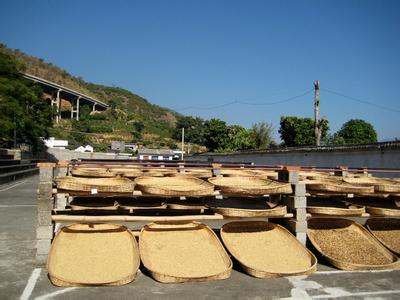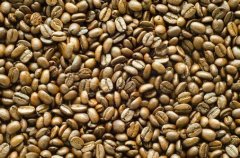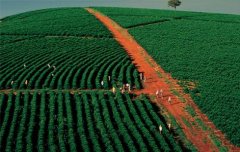A brief introduction to the treatment method of grinding degree and baking degree of Colombian boutique coffee beans mixed with sour and sweet fruits

、
As for the color of the beans, the growing environment of coffee beans and the processing technology of green beans will affect the color of coffee beans. If the same coffee beans from the same plantation are treated differently, for example, one batch is washed with water and the other with honey, the two batches will have different colors. In general, bean density is the most powerful basis for judging the elevation of coffee beans
Coffee Bean Density: How does the elevation of the coffee growing area affect coffee quality? At high altitudes, warmer temperatures during the day and cooler temperatures at night can slow coffee berry growth. The longer growth time of coffee trees means that coffee beans have more time to develop rich and complex flavor curves. What is the result of growing coffee in the highlands? Coffee beans are harder, smaller in shape and richer in flavor. The denser the coffee beans, the deeper the roasting depth they can withstand.
Valle del Cauca Province to the south, can reach Cauca Province, and then to the southeast can reach Costa Rica's second largest coffee-producing province, Vera Province, is also the largest quality bean producing area. Further south is the fine production area of Nalinglong Province, both of which have volcanic and fertile volcanic ash soil, because volcanic ash is rich in minerals, nourishing coffee fields and helping to breed coffee. The flavor of these two regions is similar, both known for sweet and sour fruit notes.
Colombia coffee species have to mention "Arabica species"(scientific name Coffee Arabica). Arabica coffee trees grow at an altitude of 900 meters to 2000 meters; cold-resistant, suitable growth temperature is 15-24℃; larger humidity is required, annual rainfall is not less than 1500 ml, and at the same time, higher requirements are required for cultivation techniques and conditions. So you can now understand why the above explanation of the logo uses the Dis Mountains in the coffee-growing area as the background
Vera province has two harvests a year, the main season is October to February, the second season is in summer but the quality is slightly worse, Vera accounts for about 10% to 20% of Costa Rica's coffee production; Nalinglong only harvests once a year, the harvest period is in spring and summer, Nalinglong accounts for about 3% to 5% of Costa Rica's coffee production.
Cauca department, named after Cauca River. Located in the southwest of Colombia, it is an important producing area of fine coffee in Colombia together with Nario Department and Huila Department.
The biggest difference between Kauka and other producing areas in climate is probably the relatively large temperature difference, with a daily average temperature of 11 ° C and a daytime average temperature of 18 ° C. The temperature difference between day and night is an important factor in the composition of high-quality coffee. Low temperatures at night and higher altitudes slow down the pace of coffee growth, allowing coffee seeds and beans to absorb more nutrients from the coffee cherries, resulting in better acidity and the special sweetness that is praised for coffee.
Elevation directly affects the appearance of coffee beans. When you look closely at green coffee beans, you will notice that each coffee has a different size and density. Are the coffee beans in your hand small and dense? Is the gap in the middle of the bean tightly closed or open? Is the slit straight or curved? Is the color of the coffee bean close to jade, light green or blue? The shape of the beans can directly reflect the growth altitude of coffee beans.
The best quality coffee beans are usually firm and grow at altitudes above 4500 meters. These beans grow extremely slowly, so the density of the beans is high, and the gaps in the middle of the beans should be curved. In contrast, coffee beans grown at lower elevations tend to have a lower density and a slightly open gap in the middle.
Important Notice :
前街咖啡 FrontStreet Coffee has moved to new addredd:
FrontStreet Coffee Address: 315,Donghua East Road,GuangZhou
Tel:020 38364473
- Prev

Caramel sweet Colombian boutique coffee beans cultivation geographical location climate altitude brief introduction
In Colombia, coffee cultivation has reached 1.07 million hectares, there are about 302000 coffee plantations in the country, and 30 to 40 per cent of the rural population depends directly on coffee production. Although there are many farms in Colombia, they are not large in area. The area of each farm is only about 2 hectares, and more than 80% of the coffee plantations have only about 5000 coffee trees, with an average of 3000 manors:
- Next

A brief introduction to the description of flavor, taste and aroma characteristics of Hawaiian boutique coffee beans with full water
Rizhao: the warm tropical sun plays an important role in the reproduction of coffee trees. Hawaii provides the morning light that Kona Coffee needs. Cloud cover: due to the rise of clouds at noon, the severe direct sunlight is ensured and stopped. Rainfall: cloud cover brought enough Rain Water, so that after a morning sun coffee, eager to enjoy the afternoon Rain Water's moisturizing baptism. Slope: good
Related
- Detailed explanation of Jadeite planting Land in Panamanian Jadeite Manor introduction to the grading system of Jadeite competitive bidding, Red bid, Green bid and Rose Summer
- Story of Coffee planting in Brenka region of Costa Rica Stonehenge Manor anaerobic heavy honey treatment of flavor mouth
- What's on the barrel of Blue Mountain Coffee beans?
- Can American coffee also pull flowers? How to use hot American style to pull out a good-looking pattern?
- Can you make a cold extract with coffee beans? What is the right proportion for cold-extracted coffee formula?
- Indonesian PWN Gold Mandrine Coffee Origin Features Flavor How to Chong? Mandolin coffee is American.
- A brief introduction to the flavor characteristics of Brazilian yellow bourbon coffee beans
- What is the effect of different water quality on the flavor of cold-extracted coffee? What kind of water is best for brewing coffee?
- Why do you think of Rose Summer whenever you mention Panamanian coffee?
- Introduction to the characteristics of authentic blue mountain coffee bean producing areas? What is the CIB Coffee Authority in Jamaica?

